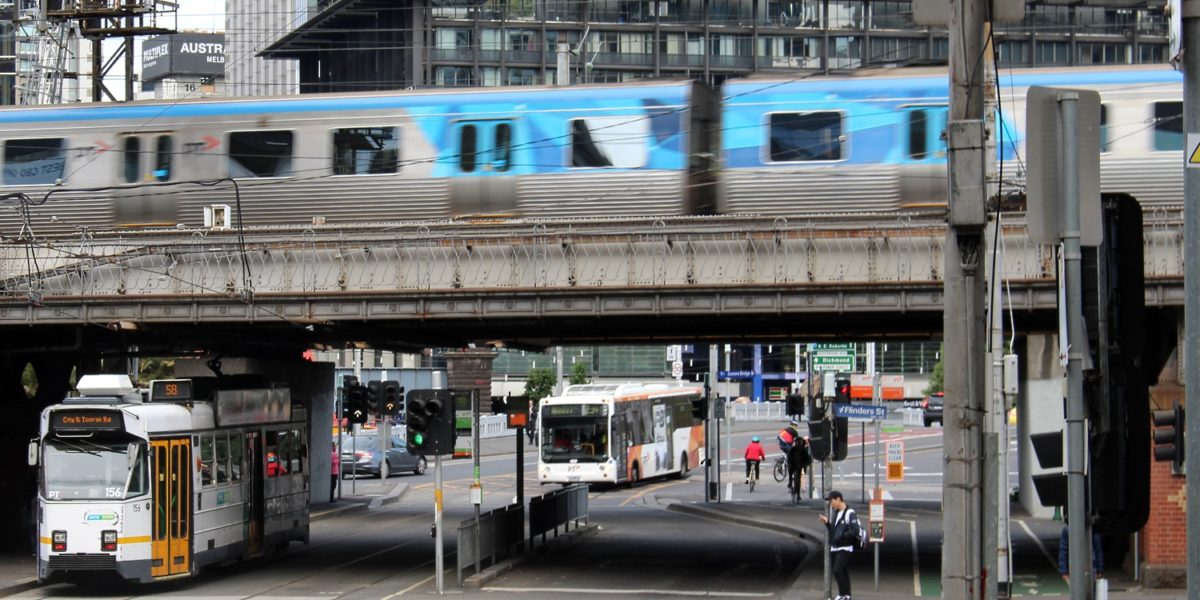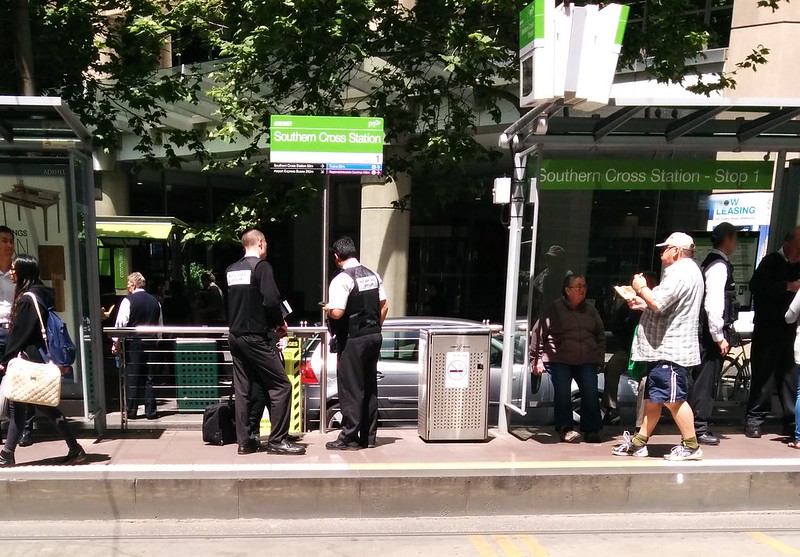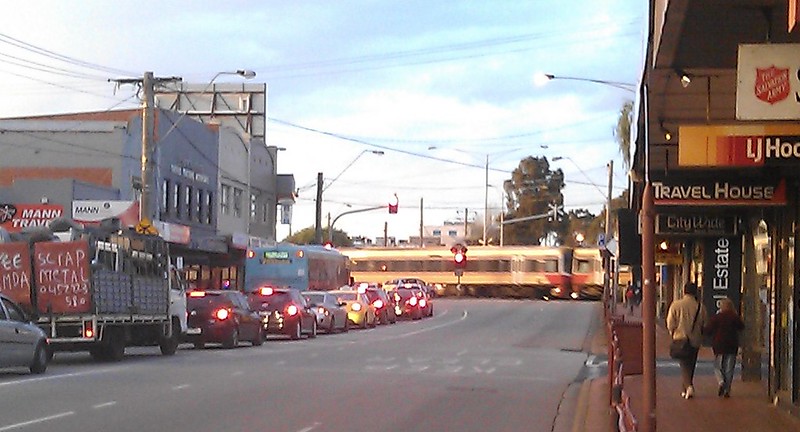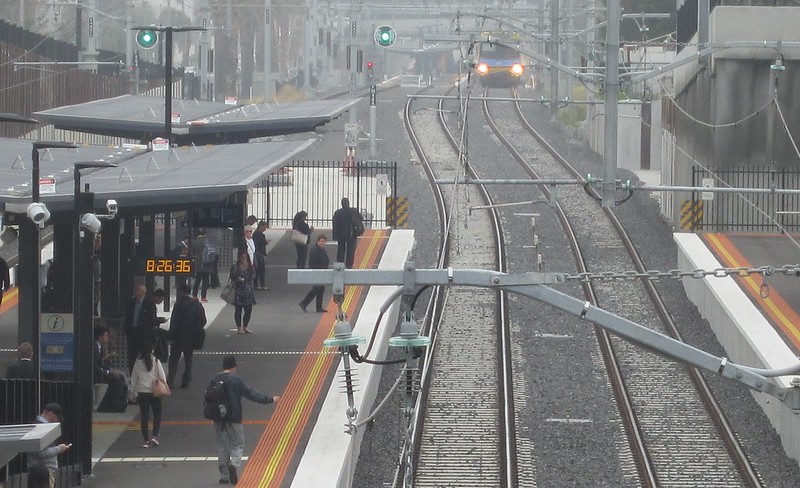This is an occasional series, when a few things happen during the week and I want to put a word in…
ABC: Ticket inspectors taking tram user’s phone to seek proof of identity unacceptable, PTV says
This is a concern, but context is important. It’s a matter of degrees. I think whether it’s acceptable or not depends on how they do it.
If the AO has to verify an ID, and no other proof is able to be presented and they say “Hey are you able to show us your name and address from an app, otherwise we’ll have to wait for police to attend”, and the passenger agrees, then I don’t see a big problem with it.
On the other hand, if the AO demands to see it, and/or grabs the phone and/or intimidates the person into logging on, and/or watches them do so (eg observes their pass code) then that’s definitely a problem.
Age: Level Crossing Removal Program business case released: the Benefit Cost Ratio (BCR) is 0.78
As the business case documents reveal, the problem is that the standard methodology used for BCRs uses a discount rate that may not be appropriate, and also doesn’t count many of benefits that are commonly associated with level crossing removals.
The core benefits anticipated as a result of the program include travel time savings, reduced vehicle operating costs, road travel reliability benefits, public transport user benefits and avoided collisions. As a standalone program, the LXRP is expected to deliver a Benefit Cost Ratio (BCR) of 0.78 using a 7 per cent discount rate. Using a discount rate of 4%, the BCR is 1.34.
The BCR has been calculated using a standard appraisal methodology. This excludes other significant benefits that the LXRP can be expected to deliver, including:
- Wider economic benefits (WEBs), such as agglomeration benefits and additional tax revenue from increased
labour supply, which are expected to be $555 million using a 7 per cent discount rate- Additional Benefits – such as improved network resilience to incidents, reduced perceived congestion benefits
and the related benefits and costs of land use changes occurring as a result of the project – are expected to be
$175 million using a 7 per cent discount rate- Local amenity benefits, increased activity centre connectivity/ consolidation, and benefits for emergency services.
- Avoidance of wider social impacts (ie. to families and communities) caused by accidents at level crossings
There’s a heap of other interesting stuff in the report… I haven’t read it all yet, though I did find a familiar photo, originally used in this post.
Hmmmm…. nice picture -> https://t.co/WiucXRnIdl 😀 pic.twitter.com/TYEF1bOXEI
— Daniel Bowen (@danielbowen) May 20, 2017
Leader: Westfield Southland shopping centre will introduce paid parking in preparation for the opening of the station.
Charging after 3 hours not unreasonable. As I understand it, at other Westfields such as Doncaster, they charge beyond 3 hours, but you can get parking validated at the cinemas and so on so you’ll still be able to see a long movie and not get charged.
Something had to be done — either a hard limit, or charging — before the station opened, or the shopping centre car park would inevitably fill with commuters’ cars.
Leader: City of Port Phillip is to ban motorcycle parking along parts of Acland Street.
Good. The current laws, which allow motorcycles to be parked basically anywhere on a footpath, are getting out of control. Motor vehicles take up too much space to be allowed in busy pedestrian spaces. Commonsense guidelines are not communicated to riders, and are unenforceable, and thus widely ignored. The lesson for the council here is to ensure that there is plenty of signage for the ban, and that it’s enforced — unlike similar bans in the City of Melbourne.
Two here today, @cityofmelbourne, including the one from last week. Can you please start enforcing your parking laws? Ping @LordMayorMelb pic.twitter.com/OKhFa5U0zJ
— Daniel Bowen (@danielbowen) May 10, 2017
Motorcycle parking banned on footpath here. 4 parked. One has been here all week. No action from @cityofmelbourne https://t.co/Tx9s2yt3VC pic.twitter.com/rxIzy5Oswr
— Daniel Bowen (@danielbowen) May 12, 2017
Age: New Metro train timetables in August.
The government had already announced that V/Line would get a boost. Geelong trains will run every 40 minutes on weekends (currently hourly) should help relieve crowding, though it looks set to mess up bus connections (if they don’t get a wriggle-on and re-write those timetables to match), and really, who decided the non-clockface frequency of 40 minutes is a good idea? Half-hourly would have been better.
The Bendigo and Ballarat lines will also get more services, including an upgrade to hourly on weekends, and there’ll also be more trains to Ararat and Shepparton.
The Metro changes include an end to the much-hated weekday off-peak Altona shuttles — these will now run all the way into the City. It’s not clear yet whether the Werribee trains will continue to stop all stations, or if these will run express part of the way; otherwise all the stations from Newport in will have 9 trains per hour, which is probably overkill for off-peak.
There will also be a handful of extra peak services on the Craigieburn, Werribee, and Sunbury, though much of the capacity freed up by Regional Rail Link on the latter two will remain unused.
Full details of Metro and V/Line timetables will be released in July.




7 replies on “The week in transport”
High discount rates of 6-8% are appropriate for commercial projects, where the majority of returns should be seen within a decade.
They’re inappropriate for infrastructure. Imagine if we claimed that the London Underground stopped offering benefits in the 1920s.
Here’s an interesting graphical appraisal of discount rates:
https://www.greaterauckland.org.nz/2011/12/03/the-deal-on-discount-rates/
Maybe the no-parking signs should be painted on the gutter?
You could do the same for “no parking of cars along here” – a double red line along the gutter perhaps?
http://www.parkingforvans.com/parkinginfo/redroutes
Steel poles cost money to put up and are easily knocked down. A double red line along the gutter would be the clearest sign of where you cannot park.
I live near Eastland, which recently moved to paid parking with the first 3 hours free, 4 if you see a movie. Trust me, the vast majority of customers see it as unreasonable. There’s still this idea that if you’re in the suburbs and not the CBD, parking should be free. Unfortunately Eastland is also near a station (Ringwood is across the street) and they needed to do something about commuters parking there all day for free. Didn’t stop people from avoiding it and driving straight to places with free parking like Westfield Knox though.
Eastland already had four hour parking limits throughout its carpark before it began charging for longer stays. Staff had to use a certain area of the carpark and display a permit to be exempt from the time restriction. I don’t think there was ever a problem with people using it as station parking – it is further than most people would walk, and the council was happy to book people who breached the limits. There are streets closer to Ringwood station than parts of the Eastland carpark is, and they don’t all fill with parked cars during the week (some do). In any case, Eastland never struggled to accommodate all its customers’ cars except at Christmas, so there wasn’t exactly a problem.
Eastland’s current parking problem is its abysmal design, both for cars and pedestrians, but that’s not related to charging and time limits. The previous design worked reasonably well for both types of user, was quite easy to navigate (helped a lot by visibility to the outside world from nearly all of the parking areas) and had the added benefit of accommodating a number of bus routes at its interchange (which was part of the public road network until Eastland swallowed it up recently and closed it). I’d be interested to see actual numbers of complaints from people who really need to shop for more than three hours at a time.
In summary, Eastland is charging for parking because it can, and because that brings in money – not because there was ever a problem with the amount of space or misuse of it. There are parking consultants out there who specialise in advising carpark owners on how to make money from their operations.
Good on Eastland for charging people who decide to park forever in the shops – I wouldn’t be surprised if half the cars in there actually weren’t Eastland customers anyway. Now if only Ringwood would follow Box Hill’s footsteps and get rid of all the cars parked bumper to bumper on every single side street and put a No Right Turns sign at the Ringwood/Bond St intersection the suburb would be a hell of a lot better. If people really must avoid the lights (and the “revenue-raiser” camera) at Maroondah Highway or the Ringwood Bypass, use Seymour/Charter St instead!